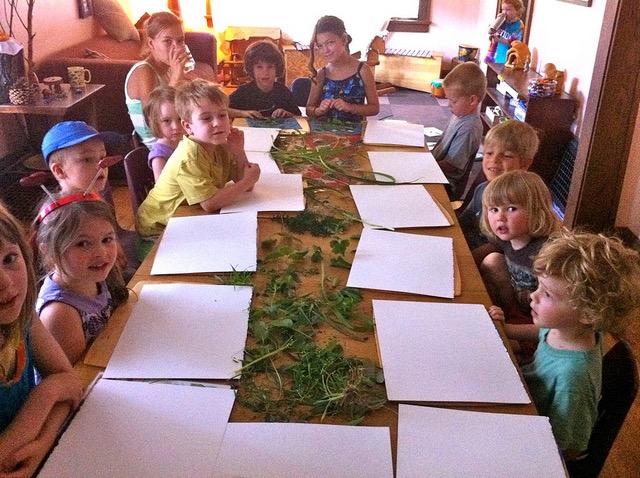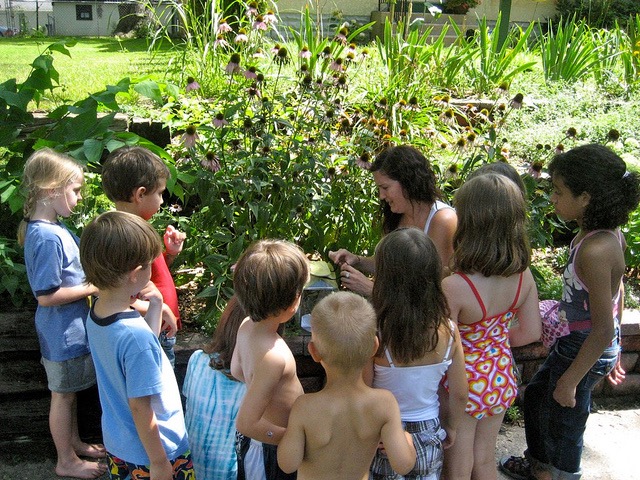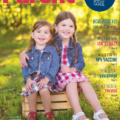Choosing child care is an important decision for many families.
Parents want to know their children will be well taken care of by qualified people in a safe environment, ideally in close proximity to home or work. These days, they’re also looking for top-quality early childhood education programming. After all, experts say the years before kindergarten are some of the most critical in all of child development!
Often the first decision parents must make on this front is to choose either a center or a home-based program.
While centers sometimes get criticized for being too institutional, families also adore them for their reliable staffing, curriculums and school-like atmospheres.
Meanwhile, home-based child-care programs get judged for being overly informal. But so many parents who choose them say they’d never give up the warm, personalized, family-like environment of home-based care.
Well, what if there were an option that could blend the best of both worlds?
Willow & Sprout
At Willow & Sprout in St. Anthony, 14 children per day, age 16 months to 5 years, attend preschool in a single-family home environment.
You might not notice anything special about the modest home that rests in the middle of a quiet residential street across from a cemetery. There are no lighted signs and there’s no parking lot either.
But each weekday, parents march up the walkway with their kids and help them hang their jackets and backpacks in a small front room before kissing them goodbye.
The children then spill into a sun-drenched living room to find a rotating collection of books and materials selected based on their interests. Throughout the day they move from room to room. They might work on a play in a former bedroom, build race tracks in another or do somersaults on mats in the basement. They’ll eat lunch at the kitchen table and move to the backyard, where they’ll climb trees or tend the organic vegetable garden.
You won’t find a fluorescent light overhead or commercial vinyl underfoot.
Reggio Emilia
Willow & Sprout is the result of an eye-opening experience that the founder, Jen Johnson, had while working in a Swedish preschool through an exchange program in college.
The school was located in a set of row houses connected to each other internally.
“It was this long piece of property with these little intimate rooms,” Johnson said. “I had never seen anything like it.”
But the setting wasn’t the only thing that resonated with Johnson.
The curriculum emphasized children’s autonomy and relationships in a way that seemed very different from what she’d experienced in America.
“The children were very regulated,” she said. “Teachers were really present with the children, and the children did not feel hurried.”
The whole experience had such a profound effect on Johnson that she wanted to create her own version of it here in the Twin Cities. In 2010, Willow & Sprout was born when Johnson purchased a house for the sole purpose of creating an in-home center for early childhood learning.
The curriculum at Willow & Sprout is influenced by the Reggio Emilia philosophy of early childhood education, which originated in a town of the same name in Italy after World War II.
According to the National Association for the Education of Young Children, the driving force behind Reggio Emilia is the belief that “it is the child’s relationship with the parent, teacher and environment that ignites learning.”
Founder Loris Malaguzzi wrote in The Hundred Languages of Children, that youngsters aren’t educated from the top down, but rather from themselves, their relationships and their environment, which he deemed the “third teacher.”
After witnessing the calming effect of homelike environments on the children in Sweden, Johnson became convinced of the important role the physical environment plays in early childhood education.
Hoping to expand
Willow & Sprout’s licensing structure is also notable.
In Minnesota, there are two types of licensing for child cares — one for child-care centers and another for family child-care providers.
Differences include caps on the number of children that can be served (up to 14 in a home versus larger numbers in centers) and safety monitoring.
Willow & Sprout is unique in that it exists in an unoccupied residential home and is licensed as a center, which offers full-time and part-time schedules.
Johnson is allowed 14 students per day, a concession she accepted after finding a local municipality (St. Anthony) willing to work with her unique strategy when it came to zoning and licensing.
Johnson — who is married and has two older children, a senior in high school and a freshman in college — would like to expand her business model to other homes in the Twin Cities, not in small part due to a waitlist that is 150 kids long.
But most cities will need to allow special zoning arrangements, or even change laws about home-based child-care centers, to allow for the atypical — and increasingly sought-after — structure of her programming.
“It is a really unique model that families highly value,” Johnson said. “Families believe in it.”
When Kristin Blenkush first toured Willow & Sprout looking for child care for her daughter, she was skeptical of the center’s claim of being “a holistic early childhood community.”
“I thought ‘Really? This is what you do? This is too much,’” she said.
But Blenkush was so enchanted with the environment — and how the children were respected and calm in their activities — she almost left her daughter there that very day.
At Willow & Sprout, the emphasis on relationships guides Johnson’s approach to discipline: Children don’t sit in time outs.
Instead, conflict is viewed by the teachers as an opportunity to develop socio-emotional skills. Instead of describing behavior as “bad,” “rude” or “naughty,” you might hear something like, “Walter’s having a hard time today and we’re going to help him work through it.”
Johnson, sharing part of the mission statement for Willow & Sprout, said: “We know children are inherently curious about the world around them and need space and time to discover it. We guide children through that process of discovery with patience, gentleness and a sense of wonder. We believe in celebrating the uniqueness of each child while nurturing a child’s sense of community.”
Today, Blenkush tears up as she considers the impact Willow & Sprout has had on her family.
“We never would have had the attitude toward childhood they have,” she said. “And that’s been a huge benefit to our whole family. There’s nothing that can compare to that.”

Green Earth Children’s Academy
Willow & Sprout isn’t the only place in the Twin Cities offering home-based child care with a focus on relationships, one’s environment and community.
Across town, in the Nokomis neighborhood of Minneapolis, is a small stucco house trimmed in green that serves kids — and also has a long waiting list.
Here — at the home of Renee Perrone — the scent of lavender fills the air as parents and children squeeze into the modest porch during morning drop-off to take off coats and say goodbye.
A young tabby cat darts amongst the crowd in search of affection. He’s instantly scooped up by a pair of tiny hands. The children tickle his whiskers before spilling into the living room where they forage through bins of toys made with natural materials, such as wood, wool, silk and cotton. A guitar sits nearby ready for circle time while 14 children settle into their daily rhythm.
This is Green Earth Children’s Academy, which caters to ages 3 to 5 on weekday mornings.
Perrone, who has been licensed in family child care since 2010, boasts a background in Waldorf education, which emphasizes the role of imagination in learning.
But she draws on the latest research in child development, no matter the philosophy, to build her program.
At its core, her curriculum is focused on building community.
“One of the most important things that preschool-aged children need to learn,” she said, “is how to function in a group and how to function interdependently.”
Her approach to discipline, like Johnson’s, emphasizes social-emotional growth. The key, she said, is creating a group culture where everyone models appropriate behavior. Where every kid receives the message: “You are not bad. I know I can hold you up to something better.”

Perrone admits this takes time and patience. She dedicates several months each year to cultivating a culture of kindness and respect. She calls it “tucking in the corners,” and says it takes practice.
At every turn for the first few months of the year, she and the other teachers repeatedly show children what appropriate behavior looks like. For example, they may repeat the phrase, “This is how we push in a chair,” while modeling the expected behavior.
“We try not to use language such as, ‘It is not OK to do that,’” Perrone said. “Instead, we use positive discipline and say, ‘Let us do it this way.’ We use the word ‘we’ because children see themselves as a part of the whole and it is gentler to say, ‘We are all sitting down now,’ rather than, ‘It is not OK to stand up.’”
Perrone said the tone is gentle, positive, firm and effective.
“What’s most important,” she said, “is how we speak to children and how we speak to each other. Because more than anything, they’re imitators.”
This work is exhausting for the teachers, but the payoff is worth it. When November rolls around, the repetition is no longer necessary as the children come to understand what’s expected of them.
At Green Earth, there’s ample time for play. Children engage in art and music, tell stories and spend plenty of time outside. Each week, they help teachers bake bread or cook soup in the kitchen, developing math skills in the process. And throughout the year, families participate in festivals meant to strengthen the sense of community.
By the end of their time at Green Earth, it’s not uncommon for children to feel like they’ve found a second family in Perrone’s home.
Finding that sense of belonging isn’t just about feeling at home in the world, however, Perrone said. It’s also part of learning to contribute to a larger community, adding: “It is one of the most important things they will carry with them for the rest of their lives.”
Amanda Webster is a writer and photographer. She lives in Roseville with her husband and two kids.





















